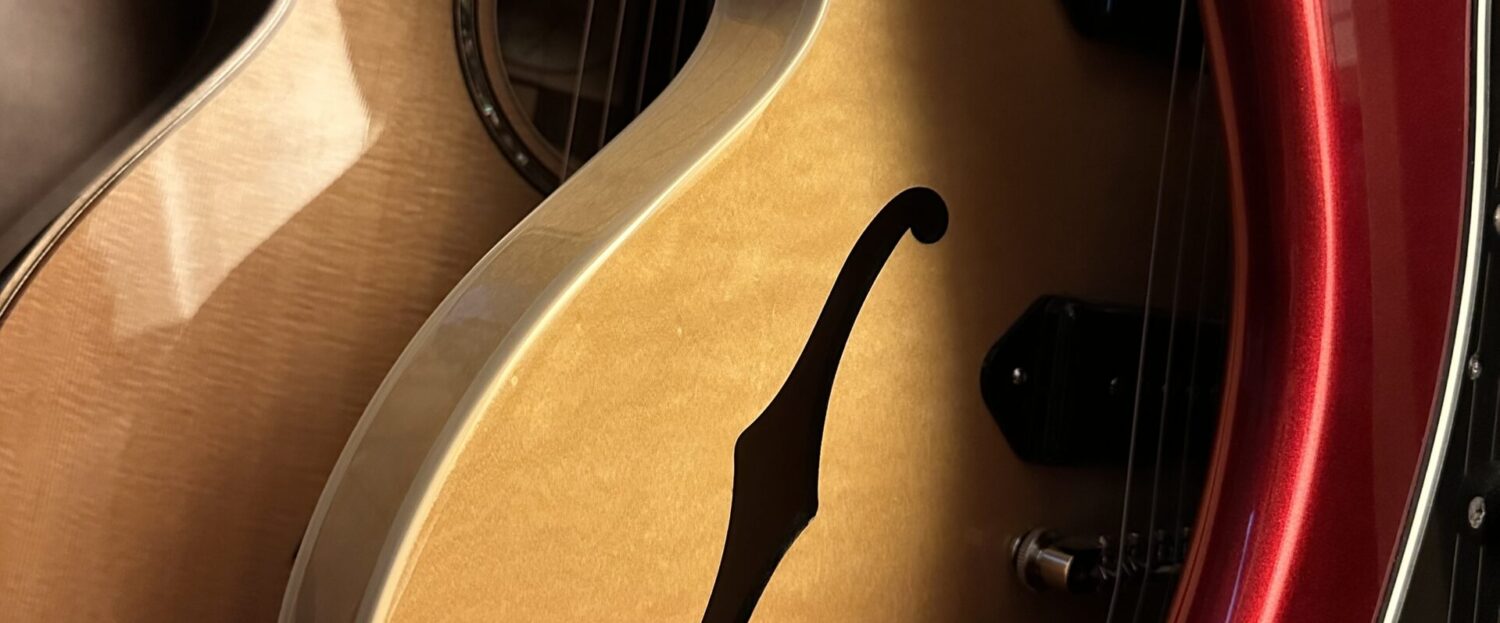If you like details & options (what audiophile doesn’t?), this page is for you. To vibrate your guitar up the fretboard or using different waveforms, go to the Guitar Vibrator album within Spotify, Apple Music, or your favourite streaming service, then choose the track you’d like to use and set it to repeat.
For most people, go to the album in Spotify here or in Apple Music here, then look for this icon in the player:

There are currently two variables for you to choose from: capo positions and harmonics content. Look back for more options in the coming months.
Capo Positions
Imagine that you’ve just vibrated your guitar for a week and are amazed to hear its new sound. Wonderful!
…but then you play any note other than a open string and find it sounding like its dull, old self. Doh!
So, how to vibrate more pitches?
My quick solution is to pop on a capo and vibrate it again, up a semi-tone. And then again, on capo 2, 3, and 4. After these five rounds of vibrating, all of a guitar’s pitches will be covered by fundamental and/or overtone frequencies. It might take awhile, but if someone really wants to vibrate a guitar, this is how to do it.
To find these sound files, just look in the album’s track titles. “Capo 0” is open position, “Capo 1” up one fret, and so on.
Harmonics Content
Time and experimentation may provide clear answers, but for now it’s a bit of a mystery how to best vibrate a guitar. Or more specifically, YOUR guitar. Different guitars may need different sound sources, or different players may want to vibrate their guitar toward a different outcome. Regardless, there are currently three options to choose from:
- Many Overtones
- Some Overtones
- Few Overtones
As you’d expect, the more overtones are present in the sound source, the more the upper harmonics of your guitar should be vibrated. So if you’re looking to brighten up your sound, using “Many overtones” might be the ticket. In contrast, if you think a guitar only needs the fundamental buzzed, choose “Few overtones”. “Some overtones” is a middle-ground.
Read more about the Sound Sources if you’re interested. Very briefly, the sounds use sawtooth waves from an analog synthesizer with varying amounts of low-pass filtering. Sawtooth waves have all of the harmonics within the harmonic series, so there’s a lot of harmonics energy present. The filtering removes different amounts of the upper frequencies, lowering the intensity.
My assumption is that “Many Overtones” is the best option, but your guess may vary. If you play with this on your guitars and find interesting results, I’d be glad to hear about it.
More About the Sound Sources
To get fully nerdy about this, go to the Sound Sources page.
Very briefly, you’ll notice that all of the sound sources available in Guitar Vibrator Volume I have a smear of tuning. Instead of pure pitches on an A=440 Equal Temperament scale, there is a slowly oscillating smush of sound. This is done on purpose, aiming to get the guitar’s wood fully vibrated on the precise pitches AND on the frequencies a little above & below “perfection”. I’m sure your guitar has never gone out of tune mid-set, but I assure you mine has.
Coming Soon…
Look back in the coming months for options like:
- single notes
- zero overtones
- pure tuning
- more bright ideas TBA once these first ideas have all been tried!
